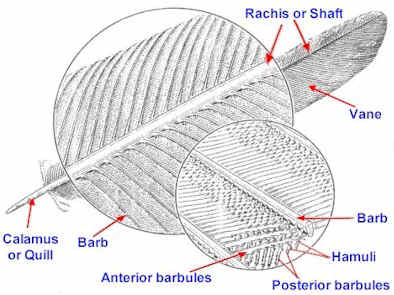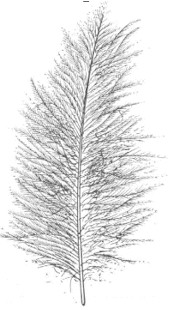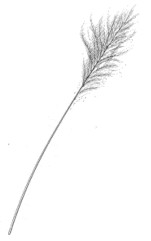Feathers
Feathers are one of the most prominent features of a bird's anatomy and they are unique to birds. Feathers perform a number of functions for a bird: 1) They provide insulation, body temperature of most birds is maintained at around 40 C; 2) Feathers allow for flight; 3) Feathers control what a bird looks like by supplying the bird with colors. Colors in birds are used for camouflage and sexual display (consider the tail feathers of a peacock).
Feather Structure
 |
Feathers have a basic form of a hollow, central shaft called a rachis and a number of smaller side branches. The side branches are called barbs and are linked together by a set of barbules and their "hooklets" sometimes called 'Hamuli' (this is perhaps best understood by seeing the diagram). The base of the feather - where their are no side branches - is called the calamus or quill. |
Types of Feathers
| Contour feathers give the bird its characteristic smooth round shape. They also give the bird its visual coloring and provide a first level of defense against physical objects, sunlight, wind and rain. They are very important. |  |
| Down feathers are smaller and lack the barbules and their accompanying hooklets so they are not zipped together and do not look as neat. In fact they are soft and fluffy. They provide most of the insulation and are so good at this that mankind for many years collected down feathers from various birds to put into sleeping bags and jackets to help keep us warm. |  |
| Semiplumes are half-way between a contour feather and a down feather. These occur between the contour feathers and help to supply insulation and a certain amount of form as well. |
|
|
Filoplumes are very small and have only a very few barbs at their tips. They are believed to have a sensory function, helping birds keep their feathers in order.
|
|

